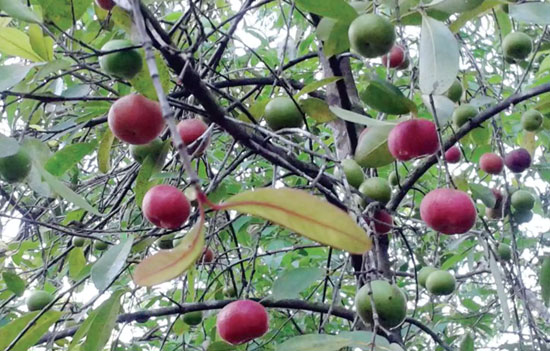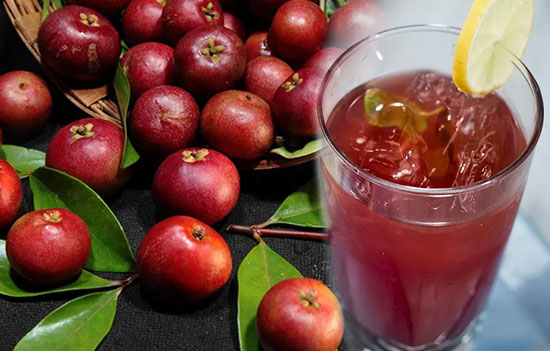- Know where kokam is found, its culinary and medical benefits. The beauty of Indian trees is that most have
immense properties, industrial values and ancient significance.
The word “kokam” takes me to the villages of the Konkan
belt where we see ample kokam fruits fallen from the trees with the
little tangy smell spread around and some kokams drying outside
traditional houses... Kokam fruit is also called as “Raat Aambe” and
“Bhiranda” in Maharashtra.
These evergreen fruit trees are found in Africa and Asia having around
200 species. It belongs to mangosteen family and 35 species out of so many are
found in India and 7 are endemic to the Western Ghats, mainly Ratnagiri and
Sindhudurg districts. Some endemic species are found in north east of India and
some in Andaman.
This tree has a dense canopy having pick flowers and reddish purple fruit
sized like an orange bearing hundreds of fruits in summer. The seeds of the
fruit bear the maximum weight having 5 to 8 seeds which is approx. 20 to 25%
weight. The outer cover of the fruit is dried which is then called “Kokam”
or “Aamsul”

Culinary uses
Indians often buy kokam for their daily traditional cooking, not
to forget the refreshing summer kokam sharbat and delicious solkadi which
is also called kokam kadhi made out of kokam and coconut milk.
Kokam is a sour agent used in
local curries as an alternative of tamarind to balance the flavor and sharpen
the taste buds in Maharashtra, West Bengal, Meghalya, Gujarat, Karnataka, Assam
and Goa. It is often used in “daal” (lentil soup). The pulp of kokam
called “Aagal” is available in market and is very often used to prepare solkadhi.

Medicinal benefits
Garcinol is a component extracted from the fruit having many medicinal
properties, hence the name Garcina. The cover of the fruit is directly rubbed
on skin in case of rashes, burns and skin allergies. The oil extract of the
seeds is an ingredient in ointments for skin and hair applications. It has
anti- ageing, anti-oxidant, anti-fungal and cooling properties.
Kokam also helps control blood
pressure, liquid metabolism and high cholesterol levels in the body. Also, it
is said to cure intestinal diseases, ear infections, rheumatoid pain, prevents
cancer and digestion problems. It’s also proved to boost immune, vital for
pregnant woman and development of a baby as its rich in Vitamin C and loaded
with dietary fibre, Vitamin B, potassium, magnesium, citric and malic acid and
carbs.
Kokam is known as “Vrukshamala”
in Ayurveda. It has 3 rasas (tastes) as per Ayurveda: katu (pungent),
amla (sour) and kashai (astringent). These three tastes are said to enhance
metabolism and healing process of the body and builds muscle tissue. Kokam
is a wonderful fruit to reduce obesity as it suppresses appetite and is a fat
burning agent.
Many pharma companies are selling kokam medicines in the market. It may
not suit some so please speak to your physician and then consume. Also
excessive consumption may cause side effects.
Commercial uses
Kokam butter is widely used in soap and candle manufacturing units due to its
oil content which is 44%. The composition of fatty acids found are similar to
the amount of acids found in cocoa butter.
Kokum butter is also used in cotton yarns and manufacturing lacquer. The
kokam butter is used in making lip balms, lip sticks, lotions and hair
products. It remains solid in room temperature and hence also used in
preparation of chocolates and sugar confectionaries.

Kokam is one of my favorites
among the sour wonders as it is easy available and has many health benefits. This is the beauty of Indian trees as most of them have immense properties, industrial values, ancient significance and all parts of the tree are used.
To read
all articles by author
References
1.
Pharmeasy
2.
FlowersofIndia
3.
DoctorNDTV
4.
Indiamart
Also read
1. Sacred
Plants of India
2. Karanj
– the Biofuel tree
3. Kalmegh
– effective cure for Dengue
4. Benefits
of Banana Tree
5. Benefits
of Neem Tree